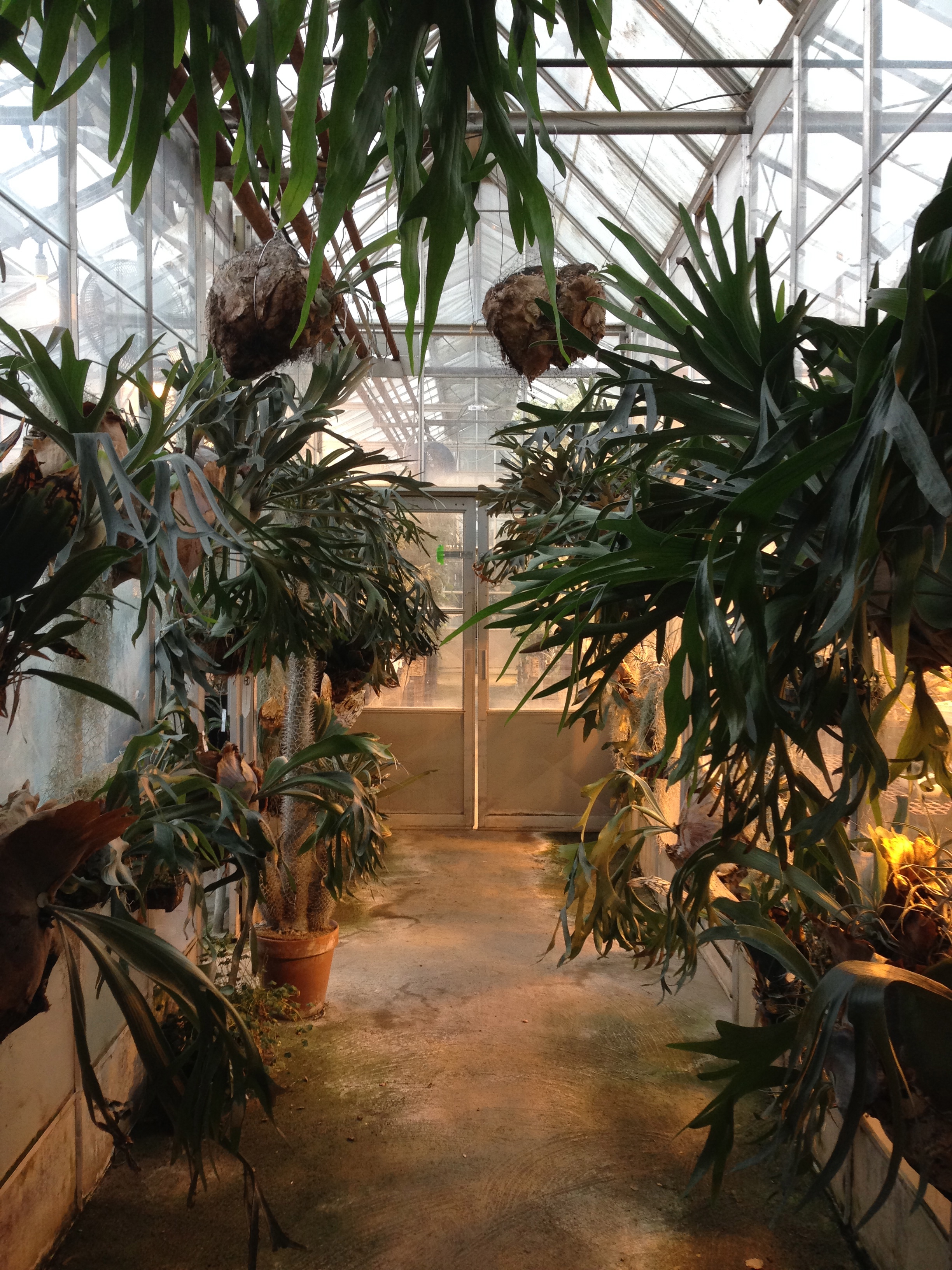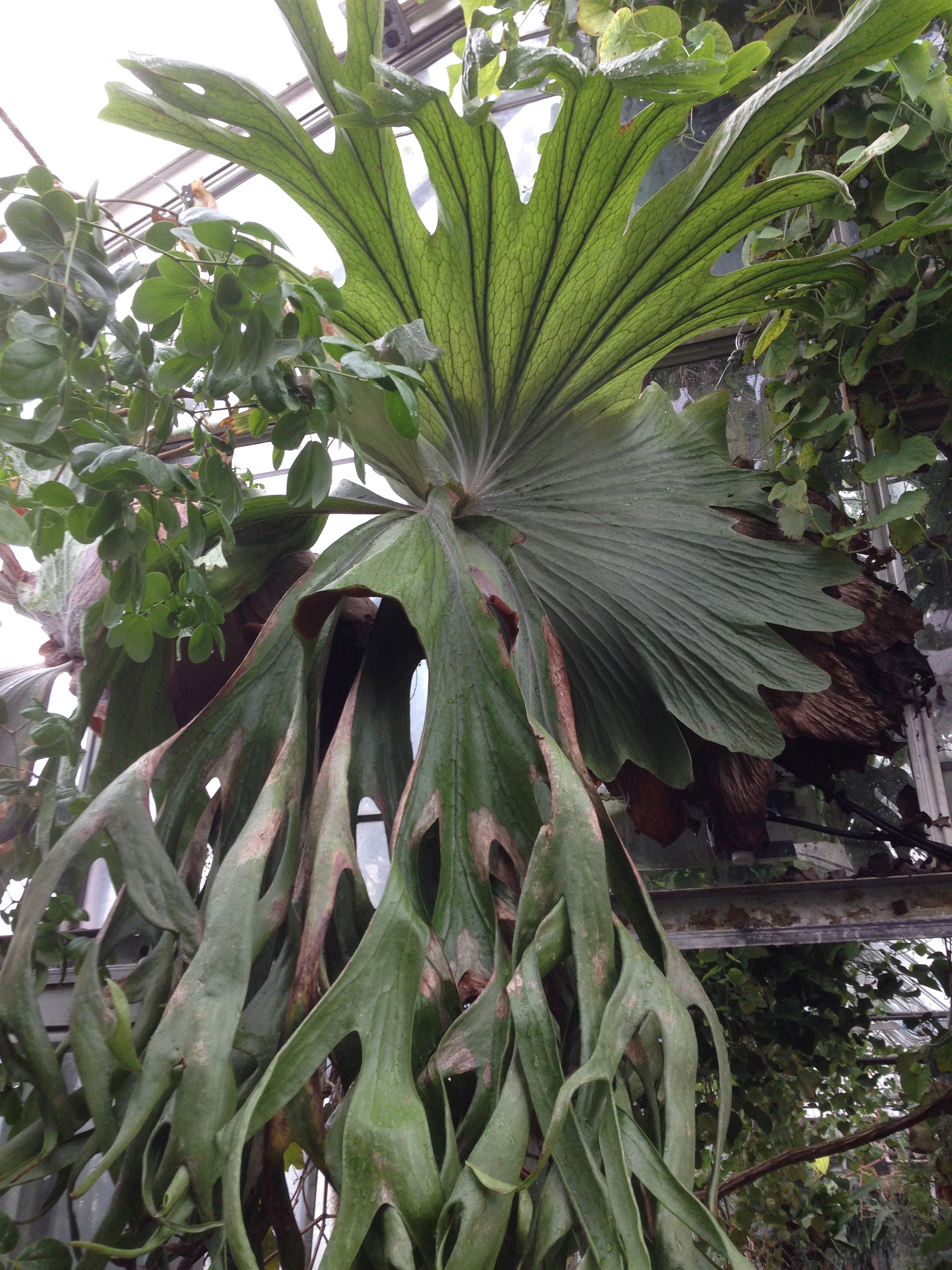Save a Deer – Mount a Staghorn Fern on Your Wall
Hall O Staghorns at the UC Davis Botanical Conservatory
My last post was about composting so it’s sort of appropriate this post is about Staghorn ferns as they have perfected composting for survival. Staghorn ferns are true ferns, meaning they produce spores as reproductive structures and not flowers. They are epiphytic — meaning they grow attached to other plants, primarily tall trees. They are not parasitic and therefore they do not receive any nutrients or water from their host plant, just access to light. Their means of acquiring nutrients to me is one of the most fascinating in the plant world.
Tropical P. superbum – note the large “shield” fronds
A spore will land on a tree, germinate and grow. To survive, the fern has adapted two different types of fronds. The “shield” leaves act as a basket and catch plant debris, dead insects, animal feces, and any and all material that can compost down for nutrients. These “shield” leaves when old do not fall off nor do they decay, but build up and act as a sponge for water collection. The secondary spore producing leaves – or “reproductive” leaves – form when the plant is mature (which can be as long as ten years). These are the leaves that lend the name “Staghorn”. They are usually long and pendulous and dissected at the ends….resembling antlers. Wind easily moves through these leaves to help with cooling and to disperse the spores that form on the undersides of the leaves.
Platycerium bifurcatum
Staghorns are found throughout many places in the world including Australia, Africa, New Guinea, southeast Asia, and South America. Most are from tropical regions and need to be grown inside year round. Two that can be grown outside in Northern California are from Australia — the commonly grown Platycerium bifurcatum and Platycerium veitchii. These both can handle temperatures to 30 degrees, but any lower than that and they should be brought inside or protected. If growing outside they should be protected from direct full sun. Slight morning sun is ok, but afternoon shade is mandatory.
A lot of people have luck growing them hanging from large trees. We had one donated to the conservatory from a lady whose grandfather started it in 1946. It traveled everywhere with her hanging from trees at all the houses she lived in. Finally, she relinquished ownership of it to us. By then it was about 5′ across and a few hundred pounds. We didn’t have a place large enough for it, so we divided it and formed it into the “ball” you see below. We created this by tying a few offshoots together and using a minimal amount of sphagnum moss between them.
Platycerium veitchii “ball” growing in the UC Davis Botanical Conservatory
Their growth habit is why you see them mounted and growing on wood. They do not need soil as their roots are very minimal and used primarily to anchor the plant to the tree on which it is growing. If given a “pup” or “offshoot” of a staghorn, it is easy to mount. A good amount of sphagnum moss or peat should be laid down on the wood or bark to aid in water absorption and nutrients for the plant until it is established. The best way to secure the plant onto the wood or bark is using fishing line or wire.
Newly mounted offshoot of Platycerium superbum
When watering, make sure water enters the top of the “shield leaves”. It is also necessary to liquid fertilize every few weeks if not more often. They can handle going dry between watering but they should not have prolonged drought. Other than that they are relatively free of pests and trouble free… especially for the amount of joy they are to view.




